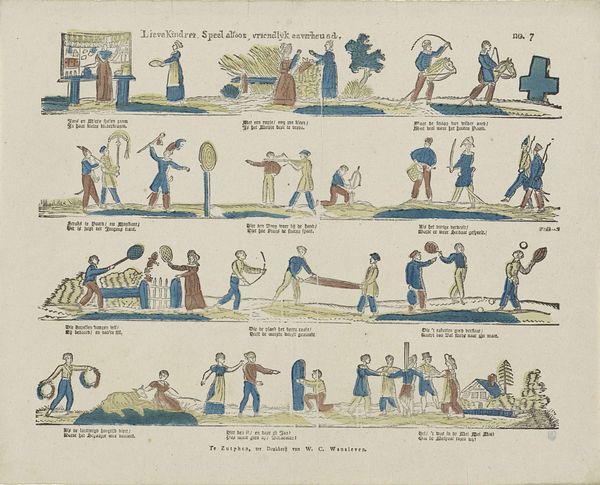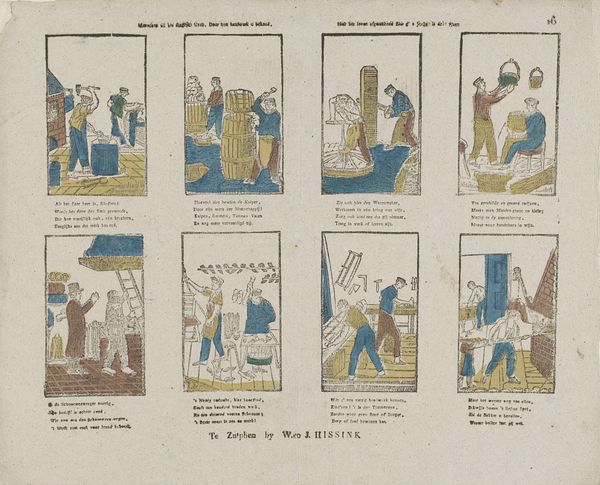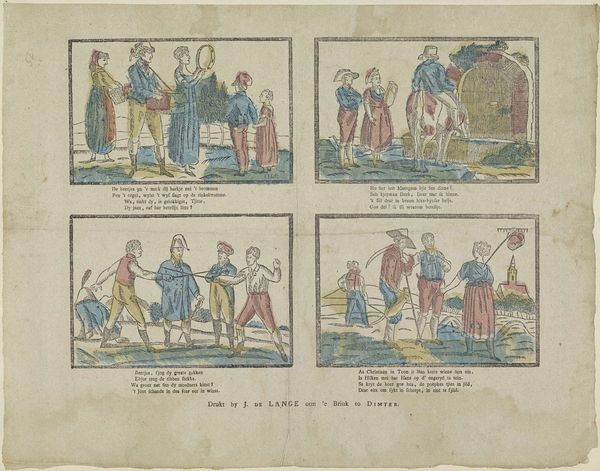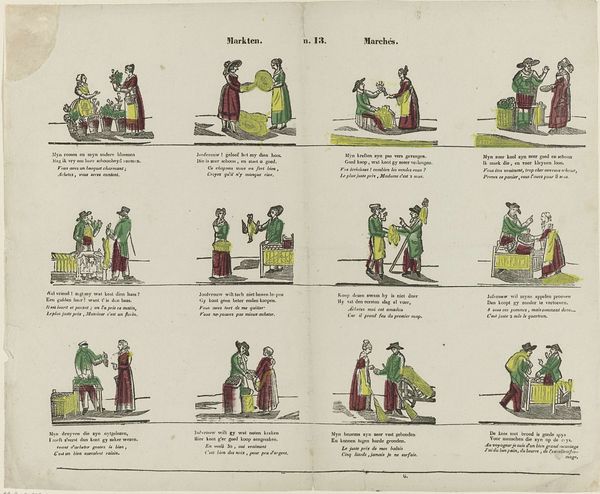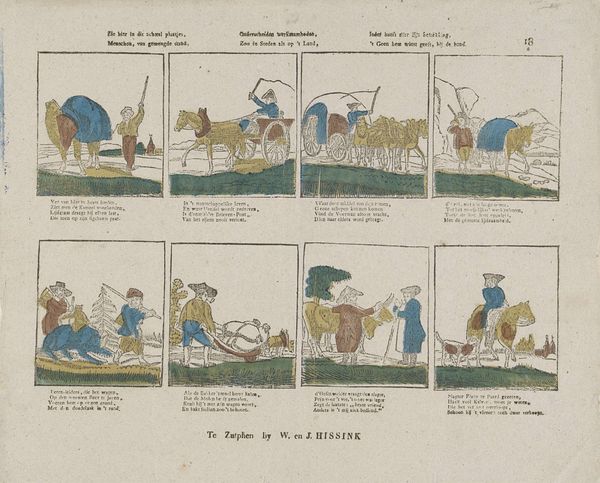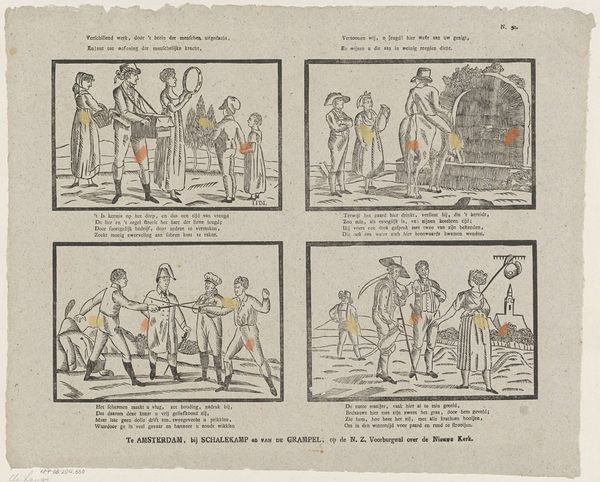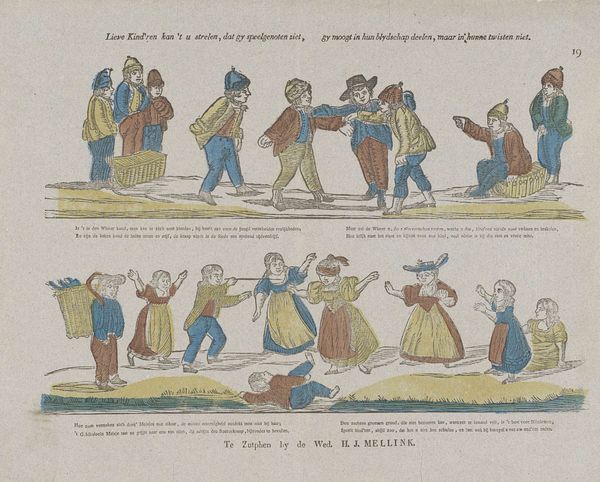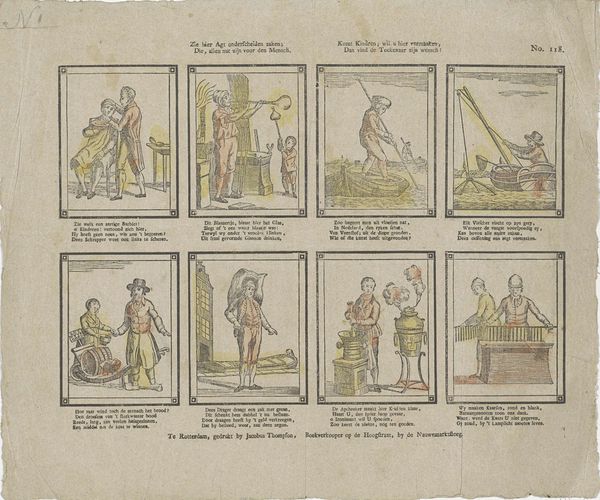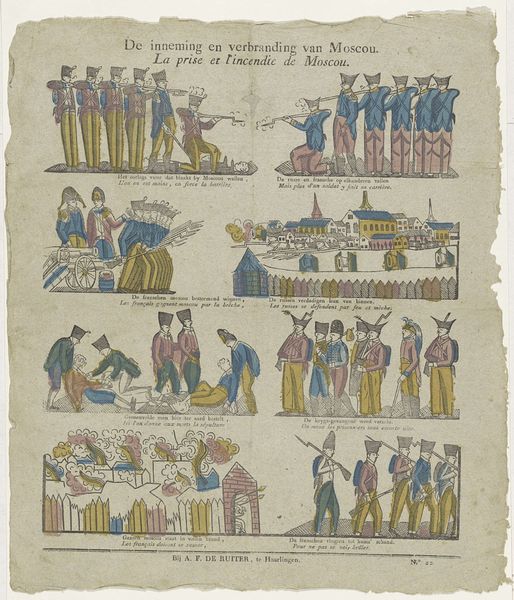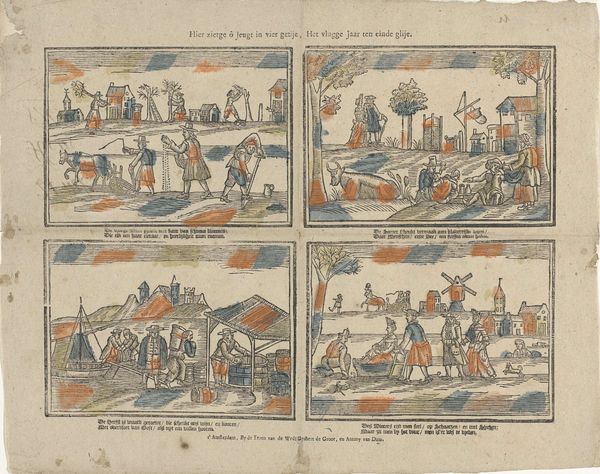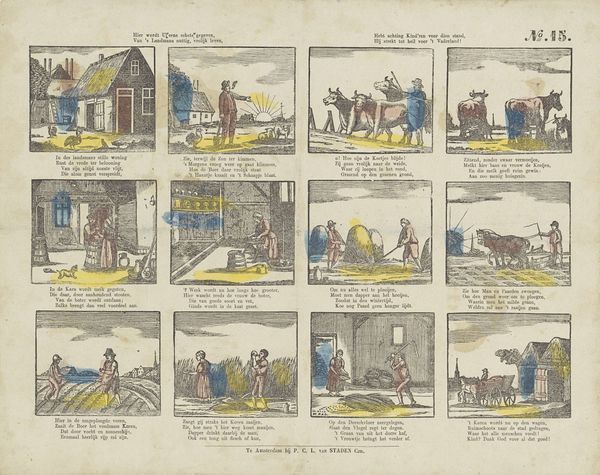
drawing, print, etching, paper
#
drawing
#
comic strip sketch
#
aged paper
#
dutch-golden-age
# print
#
etching
#
sketch book
#
traditional media
#
paper
#
personal sketchbook
#
folk-art
#
sketch
#
ink colored
#
sketchbook drawing
#
genre-painting
#
storyboard and sketchbook work
#
cartoon carciture
#
sketchbook art
Dimensions: height 336 mm, width 420 mm
Copyright: Rijks Museum: Open Domain
Editor: This is "Verschillende kindervermaken" – or "Various Children's Amusements" – by Willem Carl Wansleven, likely made sometime in the mid-19th century. It's an etching, almost like a page from a children's book, showing little vignettes of kids playing. There’s something innocent but also faintly melancholy about it. What do you see in this piece? Curator: I see a reflection of societal expectations projected onto childhood. Consider how the 'amusements' depicted—archery practice, gardening, group games— subtly reinforce gendered roles and nascent social hierarchies. These aren't just games; they are rehearsals for adulthood within a specific socio-economic context. Editor: That's interesting. I hadn’t considered how purposeful these "amusements" might be. Is there a particular image that speaks to that the most, in your opinion? Curator: The image of children mimicking a military procession particularly resonates. The performance of marching, bearing flags, and targeting objects naturalizes ideas of nationhood, order, and even conflict from a very young age. We have to ask ourselves, whose values are being instilled through these activities? And how do these representations shape a child’s understanding of their place in the world? Editor: It’s almost like a form of propaganda, but on a miniature, less obvious scale. Curator: Precisely! And even the gardening scene - traditionally linked with femininity - perpetuates existing social roles within domesticity. Editor: This really gives me a lot to consider – how these simple images contain layers of meaning tied to societal expectations and power structures. Curator: Absolutely. Examining children's pastimes offers valuable insight into how societies reproduce themselves, consciously and unconsciously.
Comments
No comments
Be the first to comment and join the conversation on the ultimate creative platform.
